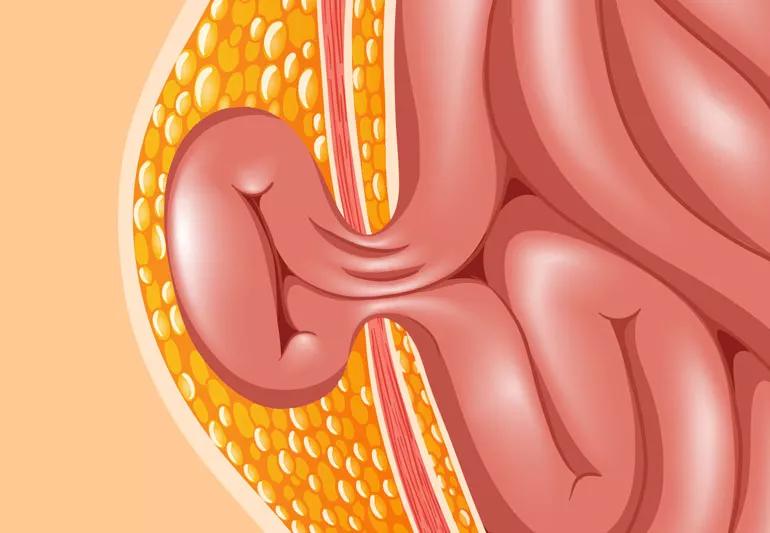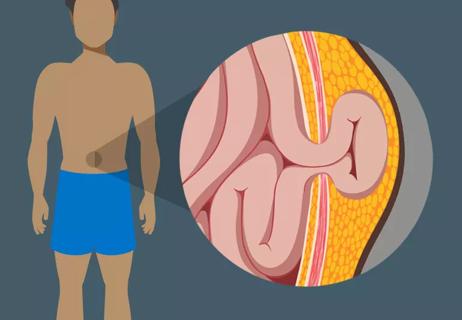We can’t predict who’ll develop a hernia, but the benefits of being active far outweigh the risk

What do Dwayne “The Rock” Johnson, Jason Momoa and Pope Francis have in common?
Advertisement
Cleveland Clinic is a non-profit academic medical center. Advertising on our site helps support our mission. We do not endorse non-Cleveland Clinic products or services. Policy
They’ve all had hernias!
Simply put, a hernia is the term used to describe a hole that develops in your abdominal wall through which organs or fat peek out, creating a visible bulge. They can happen regardless of your sex, age, weight or fitness level. Even Black Adam and Aquaman aren’t immune! In fact, their rigorous workouts may be partially responsible for their hernias.
General surgeon Ajita Prabhu, MD, walks us through the relationship between hernias, heavy lifting and exercise.
We often hear that umbilical and inguinal hernias are consequences of heavy lifting. But Dr. Prabhu says the story is usually a bit more complicated than that.
“Because of the way our anatomy develops in utero, a certain amount of weakness is often present at birth, typically in the abdominal wall near the belly button or groin,” she explains. “Hernias are common, and many people go on to develop them in these areas, even without the undue stress of heavy lifting.”
According to Dr. Prabhu, anything that raises pressure within your abdomen — coughing, lifting, sneezing or bearing down — can strain the weak area and cause a hernia. So, yes, exercise or heavy lifting may cause you to develop a hernia, but if you’re predisposed to them, a coughing fit or a bought of constipation’s just as likely to do the trick.
Advertisement
“We really cannot predict which people will develop a hernia, so I’m not sure it’s worth avoiding physical activity out of fear that a hernia may develop,” Dr. Prabhu opines. “I usually advise my patients to live their lives as they normally would.”
At the end of the day, there’s only so much you can do to prevent a hernia. They’re extremely common, and we certainly can’t help how we develop in the womb. But there are things you can do to make the strenuous exercises you enjoy — including weightlifting — as safe as possible.
The importance of warming up before engaging in any kind of physical activity can’t be overstated.
But can a warmup routine prevent hernia formation? Dr. Prabhu says it’s unlikely. But it’s still a good idea. When we warm up, we get our heart rate and our body temperature up. Our circulation improves, which means more oxygen getting to our muscles. Muscles that are warmed up are more flexible, and less susceptible to injury across the board.
Over-exercising a is real thing, and the consequences are unpleasant. You can overdo any physical activity, but weightlifting is particularly risky if you’re hoping to avoid a hernia.
When selecting a weight to lift, keep in mind that the goal is to be able to comfortably do a few sets of 10 to 15 reps. If you’re straining your muscles from the get-go, you’re trying to lift too much.
Another reason to avoid overdoing it: When we’re straining too hard, our form tends to suffer. We move too quickly, lift with our back instead of our knees, forget to breathe … all of it. That increases the potential for all sorts of injuries, including hernias.
We’ve all heard the phrase “no pain, no gain.” But there’s a big difference between feeling the burn and being in pain. Dr. Prabhu is unequivocal on this point, saying, “It’s OK to work hard and be a bit uncomfortable, but it’s important to stop any activity that causes severe pain.”
We’ve established that concern about developing a hernia shouldn’t prevent you from doing the types of exercise you enjoy, but what do you do if you already have a hernia? Is it safe to exercise? Are there certain exercises you should avoid?
The quick and simple answer: Talk to your healthcare provider.
Not all hernias are created equal. While most eventually need to be surgically repaired, some are minor enough that they can be left alone. A severe hernia, on the other hand, may need to be addressed quickly to prevent dangerous complications.
Generally speaking, Dr. Prabhu advises against doing anything too strenuous or anything that requires significant straining or bearing down. Low-impact exercises like walking, swimming or cycling are typically safe, but should still be discussed ahead of time with your provider.
Advertisement
They’ll likely recommend against:
Dr. Prabhu adds that your provider may encourage you to wear protective clothing for added support. Hernia belts, hernia trusses and compression garments can all do the trick.
“If you end up needing surgery, there are great options for repairing most umbilical and inguinal hernias, particularly when it’s a first-time operation,” Dr. Prabhu says.
So, how long do you have to wait after having a hernia repaired before you’re good to start pumping iron again? Unsurprisingly, the answer varies from person to person. That’s because:
Long story short: You shouldn’t start exercising again before your provider has cleared you, and should plan to spend between four and 12 weeks recovering before you’re able to return to high-impact and strenuous forms of exercise.
Advertisement
Learn more about our editorial process.
Advertisement

Hernias don’t go away on their own, but they don’t always require surgery either

Getting stronger, feeling better and staying active isn’t just possible — it’s doable

It’s not an enema or bowel prep, and this colonic hydrotherapy can harm proper colon function

Cramps can creep up if your shoes are too tight, you’re dehydrated or you have poor circulation

The order of your workout matters when it comes to reaching fitness goals

A consistent exercise routine can bring you positive results from head to toe

This ancient form of exercise can offer a physical and mental boost

Somatic yoga focuses on the sensation and experience of movement — not striking perfect poses

If you’re feeling short of breath, sleep can be tough — propping yourself up or sleeping on your side may help

If you fear the unknown or find yourself needing reassurance often, you may identify with this attachment style

If you’re looking to boost your gut health, it’s better to get fiber from whole foods